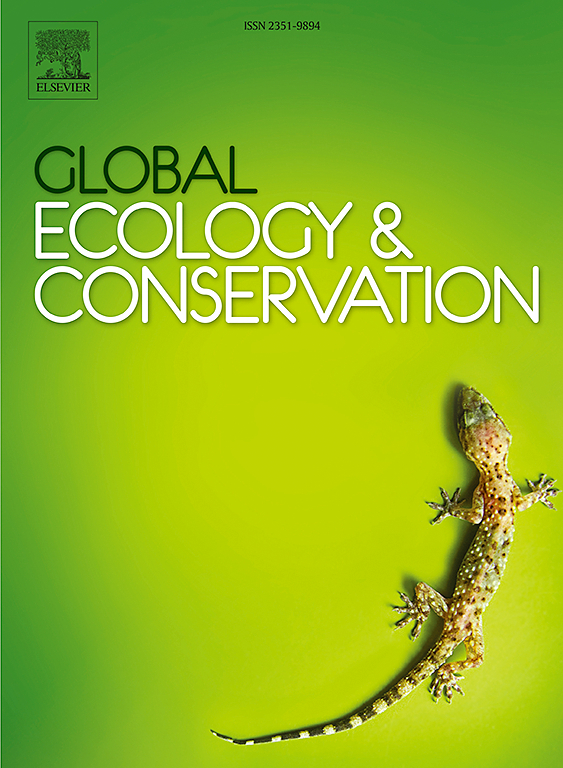Malayan porcupines in moonlight: Assessing nocturnal activity patterns, with a review of porcupine distributions in Bangladesh
IF 3.5
2区 环境科学与生态学
Q1 BIODIVERSITY CONSERVATION
引用次数: 0
Abstract
Many aspects of Hystricidae porcupine ecology in South Asia, including that of the Malayan porcupine (Hystrix brachyura), remain poorly studied. Part of this species’ global range falls within Bangladesh, where the presence and distribution of porcupines is generally unclear. In Bangladesh, 2–3 species are thought to occur: the Malayan porcupine, the Asiatic brush-tailed porcupine (Atherurus macrourus), and the Indian crested porcupine (Hystrix indica). However, the presence of the latter is disputed. In this study, we used camera trapping data from mixed evergreen forests in northeastern Bangladesh and country-wide occurrence records from a literature and media report to clarify current knowledge of porcupine distributions in the country. Our results expand the known distributions of Malayan and Asiatic brush-tailed porcupines in Bangladesh but provide no evidence of the Indian crested porcupine. Additionally, using the camera trapping data, we explore previously unreported aspects of the ecology and activity patterns of Malayan porcupines. We examined their temporal activity against that of Asiatic brush-tailed porcupines, carnivores and anthropogenic stressors, as well as investigated the effect of nighttime illumination on activity patterns. We found that Malayan porcupines are generally more active over winter. However, they consistently reduced their activity levels on brighter nights and avoided full-moon periods as a potential anti-predator mechanism. The species exhibited high temporal overlap with similarly nocturnal Asiatic brush-tailed porcupines and mesocarnivores, but little to no overlap with largely diurnal human activity, livestock or feral dog movements. Considering the limited data available on these porcupine species as well as the growing demand for bushmeat and medicinal products, concerns for porcupine populations in South and Southeast Asia are growing. Improved knowledge is crucial for conservation monitoring and management; therefore, further ecological and threat studies are needed to tackle this knowledge gap and inform conservation plans appropriately.
求助全文
约1分钟内获得全文
求助全文
来源期刊

Global Ecology and Conservation
Agricultural and Biological Sciences-Ecology, Evolution, Behavior and Systematics
CiteScore
8.10
自引率
5.00%
发文量
346
审稿时长
83 days
期刊介绍:
Global Ecology and Conservation is a peer-reviewed, open-access journal covering all sub-disciplines of ecological and conservation science: from theory to practice, from molecules to ecosystems, from regional to global. The fields covered include: organismal, population, community, and ecosystem ecology; physiological, evolutionary, and behavioral ecology; and conservation science.
 求助内容:
求助内容: 应助结果提醒方式:
应助结果提醒方式:


